Hells Bells in 2007 was my first taste of 24 hour adventure racing. I’d still rate it as one of the harder 24 hour courses I’ve done and have since raced 9 Hells Bells in a row. Unfortunately, I had missed the last two years due to injury, so this year’s race was to be my 10th Hells Bells and the first time racing it under the Wild & Co organisational banner. The Rogue team had been racing well this year in the national A1 series and we were keen to come and lay down a good result.
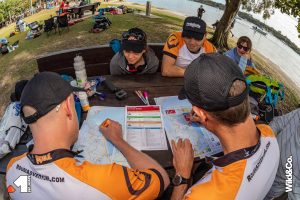 I’d made the decision recently to steer away from a blow-by-blow description of races as they can be a bit tedious: “we found this check point, then we found that check point; repeat”. Give me one of Tom’s race reports any day. But a lot happened during the 2018 Hells Bells with a lot to digest. To put the race in context, any one of about four teams could mathematically still have taken out the national series title in the week before Hells Bells, although team Thought Sports were definitely in the driving seat. Team Wild Earth Tiger’s bad luck reached its zenith when team captain Gary Sutherland was hospitalised with appendicitis just a day before the race, leaving the team to race as just a pair (the remaining team suffered a catastrophic bike mechanical which eventually saw them DNF).
I’d made the decision recently to steer away from a blow-by-blow description of races as they can be a bit tedious: “we found this check point, then we found that check point; repeat”. Give me one of Tom’s race reports any day. But a lot happened during the 2018 Hells Bells with a lot to digest. To put the race in context, any one of about four teams could mathematically still have taken out the national series title in the week before Hells Bells, although team Thought Sports were definitely in the driving seat. Team Wild Earth Tiger’s bad luck reached its zenith when team captain Gary Sutherland was hospitalised with appendicitis just a day before the race, leaving the team to race as just a pair (the remaining team suffered a catastrophic bike mechanical which eventually saw them DNF).
The First Half Went Swimmingly
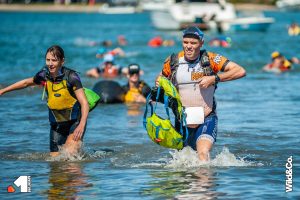 The Noosa HQ was a fantastic event location. The race kicked off with a swim across the Noosa River and a 16km run leg along the beaches and trails of the Noosa North Shore area. Although I’m not typically a fan of coastal legs as I generally find their hot, sandy, flat nature tough going, I really enjoyed this stage. We had a good swim and were one of the first teams to exit the water with the Wild Women, Peak Adventure and Not Serious Enough for Guy Andrews (NSEFGA). A little time spent hunting for CP2 allowed Thunderbolt to pass us, however a lucky break on CP3 allowed us to get the jump on the other teams along with Peak. CP6 was one of my favourites of the race. A number of CPs through the race were tricky because of their vague placement – all were in the right location and in the centre of the circle, but lacked any good attack points (for example “30m north of bend” when the track had dozens of bends within a small area). However, CP6 required a good compass bearing from a identifiable location on the map and took you through some pretty unique coastal swamp terrain. It was also at this point that we somehow made a jump on Peak and hit the kayaks for stage 2 in the lead.
The Noosa HQ was a fantastic event location. The race kicked off with a swim across the Noosa River and a 16km run leg along the beaches and trails of the Noosa North Shore area. Although I’m not typically a fan of coastal legs as I generally find their hot, sandy, flat nature tough going, I really enjoyed this stage. We had a good swim and were one of the first teams to exit the water with the Wild Women, Peak Adventure and Not Serious Enough for Guy Andrews (NSEFGA). A little time spent hunting for CP2 allowed Thunderbolt to pass us, however a lucky break on CP3 allowed us to get the jump on the other teams along with Peak. CP6 was one of my favourites of the race. A number of CPs through the race were tricky because of their vague placement – all were in the right location and in the centre of the circle, but lacked any good attack points (for example “30m north of bend” when the track had dozens of bends within a small area). However, CP6 required a good compass bearing from a identifiable location on the map and took you through some pretty unique coastal swamp terrain. It was also at this point that we somehow made a jump on Peak and hit the kayaks for stage 2 in the lead.
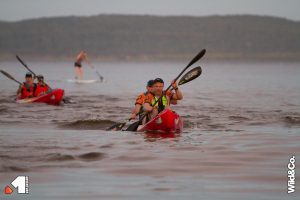 A quick TA had us on the water and off paddling as we could hear the next teams being cheered into the transition area. The 20km paddle was made tough punching into a strong out going tide on the river and then a cross head wind on the lake. Luke did a fantastic job keeping our rudderless kayak straight with a lot less complaining than you would have heard from me if I was in the back of the boat. We were eventually caught by Thunderbolt and made it to the TA for the stage 3 run up Mt Seawah together. With an initially stiff legged waddle we set off for the run ahead of Thunderbolt and were eventually caught by Peak Adventure, tagging the CP together and making it back to the water in about 45 minutes. Every team seemed to be working pretty hard and feeling the pace. Surprisingly (or perhaps not!) it was team Thought Sports who were looking the most comfortable on foot even though they were about 5 or 10 minutes back. It turns out that they had initially forgotten their tracker and had to swim back to get it at the start and had missed the initial jump, although they did manage to catch back up by the kayak leg.
A quick TA had us on the water and off paddling as we could hear the next teams being cheered into the transition area. The 20km paddle was made tough punching into a strong out going tide on the river and then a cross head wind on the lake. Luke did a fantastic job keeping our rudderless kayak straight with a lot less complaining than you would have heard from me if I was in the back of the boat. We were eventually caught by Thunderbolt and made it to the TA for the stage 3 run up Mt Seawah together. With an initially stiff legged waddle we set off for the run ahead of Thunderbolt and were eventually caught by Peak Adventure, tagging the CP together and making it back to the water in about 45 minutes. Every team seemed to be working pretty hard and feeling the pace. Surprisingly (or perhaps not!) it was team Thought Sports who were looking the most comfortable on foot even though they were about 5 or 10 minutes back. It turns out that they had initially forgotten their tracker and had to swim back to get it at the start and had missed the initial jump, although they did manage to catch back up by the kayak leg.
The final 5km paddle across Lake Cootharaba was the race high point for me. Paddling in to the sunset, finally with a gentle tail wind and surrounded by friends from different teams was almost enjoyable.
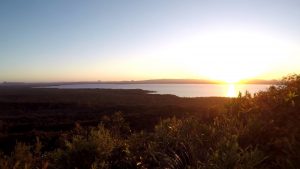 We hit the transition area and onto the bikes for the first time of the race just as we needed to turn on our lights. Leaving the TA in second place we quickly caught up to Peak Adventure when they turned around to check a turn off, however they caught us doing the same thing shortly after as we continued to play leap frog throughout the stage. On paper the navigation looked relatively straight forward, however it was complicated by the fact that the roads indicated on the map as a single, straight red line could be anything from a sealed bitumen road to single track running through farm land. This caught us out the first time when the road we were after didn’t seem to exist, however we quickly realised that we were supposed to be following the Noosa trail network marker signs which quite often seemed to run through private gated property.
We hit the transition area and onto the bikes for the first time of the race just as we needed to turn on our lights. Leaving the TA in second place we quickly caught up to Peak Adventure when they turned around to check a turn off, however they caught us doing the same thing shortly after as we continued to play leap frog throughout the stage. On paper the navigation looked relatively straight forward, however it was complicated by the fact that the roads indicated on the map as a single, straight red line could be anything from a sealed bitumen road to single track running through farm land. This caught us out the first time when the road we were after didn’t seem to exist, however we quickly realised that we were supposed to be following the Noosa trail network marker signs which quite often seemed to run through private gated property.
Into an Out of Bounds
The ambiguity of the map relative to the tracks on the ground led to the first controversy of the race. At one point, we needed to take a split in the road to stay on the main road and avoid riding into an out of bounds (OOB) area. Following the main road, we eventually hit what looked like a private property. We quickly turned around back down the hill and found the Noosa trail network track that we needed to take. Again, it was hard to pick up riding and navigating in the dark when expecting a major road turn off. However, staying on the main road we had inadvertently ridden up a private drive and into an out of bounds area on the map. It was obviously an easy mistake to make as a total of 19 teams did the same thing, and there was apparently plenty of discussion of the penalties to be applied.
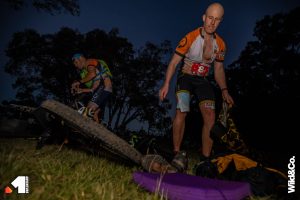 My take on out-of-bounds penalties is that they should be up to the discretion of either the race director or the race jury (where one is available). Personally, as a race director myself and having sat on a race jury to discuss an ARWS race out of bounds infringement ruling, I would consider two things – intent and advantage gained. Can it be determined that the team deliberately intended to enter the out of bounds area? If not, when they realised their mistake did they immediately reverse their route to take them back to the point where they entered the out of bounds? If the answer to these questions is that it was an honest mistake and they did everything to correct it, then I don’t feel a penalty should apply – navigational mistakes happen all the time in races, particularly when working with the limited information provided on a map. Obviously any deliberate infringement of an OOB area is cause for disqualification. If the team doesn’t realise their mistake and continues through an OOB area, then this leads us to another set of questions. Was advantage gained from entering the OOB area? Does infringement of the OOB area result in a safety risk to competitors or reputational risk to the race (eg trespassing on private property or infringing a permit requirement)? If an advantage is gained by the team from entering the OOB area, deliberate or otherwise, then clearly a penalty should be applied. In this case, I doubt any advantage was gained by teams and if anything they were disadvantaged by the time loss. It should be noted that an advantage could be gained even by an accidental infringement – a team accidentally entering an OOB area might see a feature (eg a dam, house or powerline) that helps them re-orientate themselves to the map, in which case we start to enter a grey area in the debate.
My take on out-of-bounds penalties is that they should be up to the discretion of either the race director or the race jury (where one is available). Personally, as a race director myself and having sat on a race jury to discuss an ARWS race out of bounds infringement ruling, I would consider two things – intent and advantage gained. Can it be determined that the team deliberately intended to enter the out of bounds area? If not, when they realised their mistake did they immediately reverse their route to take them back to the point where they entered the out of bounds? If the answer to these questions is that it was an honest mistake and they did everything to correct it, then I don’t feel a penalty should apply – navigational mistakes happen all the time in races, particularly when working with the limited information provided on a map. Obviously any deliberate infringement of an OOB area is cause for disqualification. If the team doesn’t realise their mistake and continues through an OOB area, then this leads us to another set of questions. Was advantage gained from entering the OOB area? Does infringement of the OOB area result in a safety risk to competitors or reputational risk to the race (eg trespassing on private property or infringing a permit requirement)? If an advantage is gained by the team from entering the OOB area, deliberate or otherwise, then clearly a penalty should be applied. In this case, I doubt any advantage was gained by teams and if anything they were disadvantaged by the time loss. It should be noted that an advantage could be gained even by an accidental infringement – a team accidentally entering an OOB area might see a feature (eg a dam, house or powerline) that helps them re-orientate themselves to the map, in which case we start to enter a grey area in the debate.
This then raises the question of safety or reputational risk. Clearly the race directors didn’t want teams to enter this particular private property as they had specifically marked it as OOB. Note there were plenty of other private properties on the map, some of which teams strayed into as evidenced by the tracking system, which were not marked OOB on the maps. The race directors rightly identified this particularly property as an issue and flagged it as OOB, however obviously there was not sufficient information on either the maps or in the briefing to prevent almost half the field making the same mistake and straying into this area. Anyway, I think the right call was made to not widely penalise the infringement. Who would want to be a race director?
That Rogaine Stage
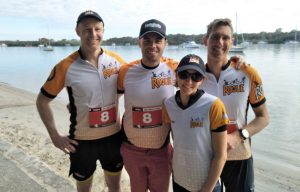 Back to the racing, coming off the stage 5 bike leg, we hit what we predicted would be the make or break crux leg of the race – a 10 check point rogaine through the hardest part of the night. Each check point was awarded a time credit of 45 minutes to an hour, with the rule being that you only needed to collect a minimum of one check point. We made the pre-race assumption to just collect all the CPs figuring the bonus time would total up to be worth it and the course setting generally committed you to doing a loop of the CPs anyway. We hit the leg in second place just 5 minutes behind Peak Adventure, intending an anti-clockwise loop picking up the more abundant but trickier check points further out to the north first. A look at the tracking had us hit CP14 in first place. However, the terrain to get into and out of the check point was horrendous – thick, over-grown, dead fall, thorny vines and lantana, made more difficult to negotiate in the dark as it was impossible to pick any kind of clear line. Stumbling back out of that CP it was immediately obvious that picking up the check points was at best going to be a zero sum game, not to mention all of the physical effort it was going take. In hindsight, the obvious best strategy would be to just pick up the one easy check point to the south (CP13) and not worry about chasing the bonus time for the physical effort and the risk of making a mistake and losing even more time. The problem we faced was that we were now way out north on the map. Also, we were aware that there was an opening time for the abseil of 3am and if we had of just collected the one CP, we would probably have been waiting for the ropes to open going by the predicted times for the remaining legs thereby losing more time on the clock. We knew there was also a closing time for the abseil, but couldn’t remember what this was (we may have had this closing time confused with the closing time for the hike up Pomona), so we knew we couldn’t stay out on the rogaine forever – the closing time of the race never came into our calculations. As such, we decided to pick up two more CPs which seemed to be closer to the tracks and therefore minimise time lost bashing though impenetrable scrub before legging it back to the TA.
Back to the racing, coming off the stage 5 bike leg, we hit what we predicted would be the make or break crux leg of the race – a 10 check point rogaine through the hardest part of the night. Each check point was awarded a time credit of 45 minutes to an hour, with the rule being that you only needed to collect a minimum of one check point. We made the pre-race assumption to just collect all the CPs figuring the bonus time would total up to be worth it and the course setting generally committed you to doing a loop of the CPs anyway. We hit the leg in second place just 5 minutes behind Peak Adventure, intending an anti-clockwise loop picking up the more abundant but trickier check points further out to the north first. A look at the tracking had us hit CP14 in first place. However, the terrain to get into and out of the check point was horrendous – thick, over-grown, dead fall, thorny vines and lantana, made more difficult to negotiate in the dark as it was impossible to pick any kind of clear line. Stumbling back out of that CP it was immediately obvious that picking up the check points was at best going to be a zero sum game, not to mention all of the physical effort it was going take. In hindsight, the obvious best strategy would be to just pick up the one easy check point to the south (CP13) and not worry about chasing the bonus time for the physical effort and the risk of making a mistake and losing even more time. The problem we faced was that we were now way out north on the map. Also, we were aware that there was an opening time for the abseil of 3am and if we had of just collected the one CP, we would probably have been waiting for the ropes to open going by the predicted times for the remaining legs thereby losing more time on the clock. We knew there was also a closing time for the abseil, but couldn’t remember what this was (we may have had this closing time confused with the closing time for the hike up Pomona), so we knew we couldn’t stay out on the rogaine forever – the closing time of the race never came into our calculations. As such, we decided to pick up two more CPs which seemed to be closer to the tracks and therefore minimise time lost bashing though impenetrable scrub before legging it back to the TA.
All told, we were out on the rogaine for 4:15 for a total of 2:45 credit. It was admittedly a bit demoralising after having such a great start to the race and not really having too many issues with the navigation or pace on the rogaine. Our best hope was that the other top teams would be having similar issues – at the time I thought the bigger threat would come from a team from behind that began with a strategy of only getting one or a couple of CPs and would therefore minimise their relative time lost. However, we were back out of the TA in second place behind team NSEFGA and knew that the best we could do was keep pushing and racing. As it turns out, Thought Sports, Thunderbolt, Peak Adventure and Adventure Junkies all attempted to sweep the stage. Only Thought Sports and Thunderbolt managed to do this in a time that netted them any time credits (for around 8 hours of pretty physically effort). Also, as a result only Thought Sports made it back to the finish line in under 24 hours and, because of a rule stated in the course notes which we and most of the other teams missed, the other teams ended up losing all of their time credits and being bumped well down in the rankings when they crossed the line over the 24 hour time cut off.
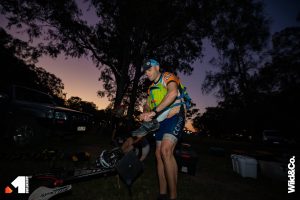 Rogaine stages in linear races can be a great addition as they provide variety in the racing, bring in an element of strategy and prevent a follow-the-leader mentality in a race. Wild & Co were obviously keen to introduce this stage as a way of keeping the faster teams out for racing longer. Unfortunately, because of how hard the overall race course was and how long and slow the rogaine was (particularly how horrible the vegetation was off-track) the net result was probably not what the organisers were after. There is no doubt that the best team on the day won and a big congratulations to Thought Sports for securing their first national championship. Credit also to the other teams like the Wild Women, Everyday Life Fitness and NSEFGA for making the right initial strategic decision. However, I really do feel for teams like Thunderbolt and Peak Adventure whose results don’t reflect their strength, navigation and team work shown in this race. I think they have every right to feel a bit hard done by in this race, but the written rules left the organisers no room to move and any decision was always going to see at least one unhappy team.
Rogaine stages in linear races can be a great addition as they provide variety in the racing, bring in an element of strategy and prevent a follow-the-leader mentality in a race. Wild & Co were obviously keen to introduce this stage as a way of keeping the faster teams out for racing longer. Unfortunately, because of how hard the overall race course was and how long and slow the rogaine was (particularly how horrible the vegetation was off-track) the net result was probably not what the organisers were after. There is no doubt that the best team on the day won and a big congratulations to Thought Sports for securing their first national championship. Credit also to the other teams like the Wild Women, Everyday Life Fitness and NSEFGA for making the right initial strategic decision. However, I really do feel for teams like Thunderbolt and Peak Adventure whose results don’t reflect their strength, navigation and team work shown in this race. I think they have every right to feel a bit hard done by in this race, but the written rules left the organisers no room to move and any decision was always going to see at least one unhappy team.
I’ve done a number of races before employing a time bonus system and to be honest, I’m not a fan of them. Firstly, if you are going to use a time bonus system, you really do need to have an electronic timing system like Navlight or SportIdent to help administer the results at the finish line. Having a race where the final results are not known until days after the race are a sure was to kill the sport for any new teams giving AR a try for the first time. I’ve also had feedback from people following the race causally online that they found it next to impossible to track the race standings from the point of the rogaine onwards, particularly if they were just checking in once or twice during the event. Secondly, in past races I’ve done, the time credit is typically way more than the time it takes to get the check point, so for fast teams it is usually a matter of just getting all of them anyway and finishing with results that look stupid on paper (like a 3 hour wining time for a 12 hour race). The bonus credits only then come in to play for a subset of mid pack teams.
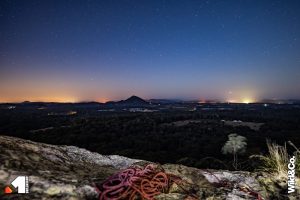 If a race wants to use a system to keep the fastest teams out for longer, then a better suggestion is to run it one of two ways. I’ve done races where the top teams have to do a whole bonus leg at the finish line which has worked fine in the past. Alternatively, if you wanted to include this leg within the race, at least make it two thirds of the way in. Then set up some clearly defined cut off times – for example in this race teams arriving before 9pm could have been made to get 7 CPs on the rogaine, teams arriving after that time 3 CPs and teams arriving after 5am told to skip the leg completely – all whilst staying full ranked. This still allows for plenty of strategy, will serve to bunch the field up again a bit by keeping the faster teams out longer and the wining team should still generally cross the line first. It also allows the organisers a bit of ad hoc flexibility to adjust things on the fly if teams are moving much slower than predicted (for example they could cut the number of CPs down from 7 to 6, or even remove the whole leg completely). This system has all the strategic advantages of a rogaine leg but is way simpler to administer and follow as a spectator.
If a race wants to use a system to keep the fastest teams out for longer, then a better suggestion is to run it one of two ways. I’ve done races where the top teams have to do a whole bonus leg at the finish line which has worked fine in the past. Alternatively, if you wanted to include this leg within the race, at least make it two thirds of the way in. Then set up some clearly defined cut off times – for example in this race teams arriving before 9pm could have been made to get 7 CPs on the rogaine, teams arriving after that time 3 CPs and teams arriving after 5am told to skip the leg completely – all whilst staying full ranked. This still allows for plenty of strategy, will serve to bunch the field up again a bit by keeping the faster teams out longer and the wining team should still generally cross the line first. It also allows the organisers a bit of ad hoc flexibility to adjust things on the fly if teams are moving much slower than predicted (for example they could cut the number of CPs down from 7 to 6, or even remove the whole leg completely). This system has all the strategic advantages of a rogaine leg but is way simpler to administer and follow as a spectator.
One final thought that comes from the perspective of a race organiser who races: if you have a vital piece of information about a rule, time cut off or course direction, write it on the competitor’s maps. I’ve sat through plenty of race briefings and only listened with one ear. I can guarantee that the only way you will have the majority of the field follow a direction is to right it directly on the map they have with them out on the course. From experience I know that having key information buried in course notes means that many racers won’t pick up on it, leading to potential issues around penalising infringements down the line.
That Phone Call
Coming of the rogaine leg, we were second out of the TA behind NSEFGA who only picked up a single time credit CP. We were given a lot of information from the volunteers about our standings in the race, for example how the other lead teams were going out on the rogaine and the errors they had made getting there, how much bonus time they were likely to have and how far back they were. This is a reflection of how great the tracking has become in these races with volunteers having access to a wealth of live course information they might not have once had. To be honest, I’m a little conflicted about getting this information. An argument could be made around equity – if this information is not going to be available to every team at every transition area, is it fine to pass it along to any team? This gets back to a broader discussion on the changes race tracking will bring to racing and is an issue that I think requires some close introspection and debate within the AR community – more on this below.
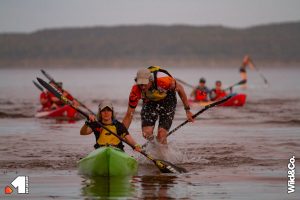 Setting off on the bikes again, the team were still moving strongly and navigating well, trying to put the disappointing rogaine behind us. At some point we caught up to the pair from NSEFGA who chose to ride with us. Heading in to CP29, I managed to get my head off the map while stuffing around with my bike odometer. We eventually relocated to the right track, but all of our attack points to the CP proved fruitless. The CP was buried in a broad, scungy creekline with multiple unmarked tracks and features in the area. Despite grid searching with both teams in both creek lines and obviously passing right by the flag multiple times, we hadn’t found the flag after an hour. This was exacerbated by me puncturing which needed a repair. At one point I made the final call to phone it in to find out what the penalty was for skipping a CP as this penalty is different between races and even within races. Chatting to the race director on the phone, I was told the penalty would be 2x the slowest time although it wasn’t clear if that was the slowest time for that CP, that stage or the whole race. Clearly it was harsh enough to warrant sticking around for the CP. As we were also the first team there, it was also in the back of my mind that the CP may have been misplaced or missing and I wanted to confirm with Chris that we hadn’t passed right over the flag on the tracking which would suggest it wasn’t there. The net result was that nothing was confirmed but that he was pretty confident it was in the right place. As I was getting off the phone, the Wild Women and Everyday Life Fitness Tiger teams had rolled in, and with so many eyes on the ground the flag was found and we were on the way.
Setting off on the bikes again, the team were still moving strongly and navigating well, trying to put the disappointing rogaine behind us. At some point we caught up to the pair from NSEFGA who chose to ride with us. Heading in to CP29, I managed to get my head off the map while stuffing around with my bike odometer. We eventually relocated to the right track, but all of our attack points to the CP proved fruitless. The CP was buried in a broad, scungy creekline with multiple unmarked tracks and features in the area. Despite grid searching with both teams in both creek lines and obviously passing right by the flag multiple times, we hadn’t found the flag after an hour. This was exacerbated by me puncturing which needed a repair. At one point I made the final call to phone it in to find out what the penalty was for skipping a CP as this penalty is different between races and even within races. Chatting to the race director on the phone, I was told the penalty would be 2x the slowest time although it wasn’t clear if that was the slowest time for that CP, that stage or the whole race. Clearly it was harsh enough to warrant sticking around for the CP. As we were also the first team there, it was also in the back of my mind that the CP may have been misplaced or missing and I wanted to confirm with Chris that we hadn’t passed right over the flag on the tracking which would suggest it wasn’t there. The net result was that nothing was confirmed but that he was pretty confident it was in the right place. As I was getting off the phone, the Wild Women and Everyday Life Fitness Tiger teams had rolled in, and with so many eyes on the ground the flag was found and we were on the way.
As a result, we were given a 2 hour penalty for the phone call which affected our overall position in the race. Again, penalties for making a phone call vary from race to race, and I’m happy to take this one on the chin, although I do feel terrible for the rest of the team. Ultimately though, with the time lost on the rogaine and other penalties awarded, the final results did feel rather arbitrary anyway, making it a bit easier to swallow. Carrying a phone is generally mandatory equipment for all races, including the Raid events. The reality is they are one of the most important pieces of first aid safety equipment teams have on them. Usually the instruction is to have them switched off and water proofed. I have done many races in the past though where the phone is pre-sealed in a tamper proof bag with the instruction being that if the bag is opened, the result is likely to be a DNF. This was not the case in Hells Bells this year. As a race director, I actually want a team to feel comfortable in using the phone to alert me of any unforeseen safety issues out on the course. Obviously I would prefer them not to be calling me up for a clarification on details of a particular rule, particularly given that the Raid rules follow the well established, highly publicised rules of the Australian Rogaine Association. However, I would prefer a team to have a rule clarified rather than incur a race infringement and would probably not penalise them on the face of this alone. To be fair, there is a rule about taking a photo of the location of a CP if you believe it is genuinely missing at Hells Bells, and I understand the final decision made by the race directors in this instance – I would just hate for the use of the phone to be seen as any attempt to gain advantage, which it clearly wasn’t.
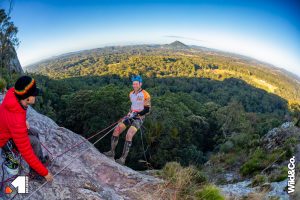 Which all brings us full circle to the management of phones, and in particular GPS tracking in Adventure 1 races. The current live tracking system used at A1 races is brilliant. When used in conjunction with a dedicated live leaderboard and an on-the-ground reporting team, I think they have the potential to value add to the online viewer experience of adventure racing by an order of magnitude. However, the flip side is that the information from live tracking is potentially also available to any team out on the course. I’ve already highlighted the issues of volunteers and spectators providing information to teams on the progress of other teams. With teams carrying a phone in their pack, there is a foreseeable temptation to just switch it on and relocate using the race tracking in a moment of navigational desperation. It would even be possible for the lead navigator to do this without even the knowledge of his own team mates (“I’m just dropping the kids off at the pool – I’ll catch you up guys”). I’d hate to think this is happening frequently in races, but it is naive to think it hasn’t happened in the past. I did have to DQ one team at the Rogue Raid this year who used Google maps to relocate after getting lost – the infringement was not malicious and just resulted from not thinking through the rules to their full extent, and would not have been picked up without the team’s own honesty. Even the proliferation of GPS watches is problematic. I love to track my race with a GPS for all the Strava glory afterwards and use a tracker that is sealed away in my pack. But what is to stop a single member just flicking the watch on to make a crucial distance measurement from a track junction to locate the correct attack point to a CP, or grab a GPS referenced altitude to relocate along a spur?
Which all brings us full circle to the management of phones, and in particular GPS tracking in Adventure 1 races. The current live tracking system used at A1 races is brilliant. When used in conjunction with a dedicated live leaderboard and an on-the-ground reporting team, I think they have the potential to value add to the online viewer experience of adventure racing by an order of magnitude. However, the flip side is that the information from live tracking is potentially also available to any team out on the course. I’ve already highlighted the issues of volunteers and spectators providing information to teams on the progress of other teams. With teams carrying a phone in their pack, there is a foreseeable temptation to just switch it on and relocate using the race tracking in a moment of navigational desperation. It would even be possible for the lead navigator to do this without even the knowledge of his own team mates (“I’m just dropping the kids off at the pool – I’ll catch you up guys”). I’d hate to think this is happening frequently in races, but it is naive to think it hasn’t happened in the past. I did have to DQ one team at the Rogue Raid this year who used Google maps to relocate after getting lost – the infringement was not malicious and just resulted from not thinking through the rules to their full extent, and would not have been picked up without the team’s own honesty. Even the proliferation of GPS watches is problematic. I love to track my race with a GPS for all the Strava glory afterwards and use a tracker that is sealed away in my pack. But what is to stop a single member just flicking the watch on to make a crucial distance measurement from a track junction to locate the correct attack point to a CP, or grab a GPS referenced altitude to relocate along a spur?
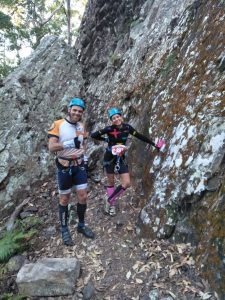 Moving forward, I feel there needs to be a more stringent set of guidelines around 1) carrying GPS enabled devices and 2) dissemination of information afforded by the live tracking system. Again, this is something that is probably open for further debate within the community, however I do have a few starting suggestions. In regards to GPS enabled devices, I think we should embrace them as a community. The post-race feedback they provide is great for the athlete but also great for the promotion of the sport in other athletic circles. However, race directors should have a ruling about these devices being secured away in tamper proof bags with rules and penalties around if and how these can be accessed. Is it an automatic DQ if an emergency phone is accessed? What do you do if a team phones in a potential unforeseen course hazard (small fire, flooded creek, gun toting landowner, etc)? Can these devices be re-sealed at a TA? How do we minimise teams carrying additional devices during an event to access for deliberate cheating? Do we have to go to the extent of complete random searches of racers and their equipment? And finally, how do we manage and embrace the information teams can get from external sources (support crew, volunteers, race organisers, spectators) about other teams available from the live tracking? Do we strictly regulate this with a policy of no external information to be provided and direct third parties to this ruling, or do we embrace this and have a system in place to provide live feedback to teams during the event? Anyway, these are all questions I don’t necessarily have answers to but which should make for interesting future debate.
Moving forward, I feel there needs to be a more stringent set of guidelines around 1) carrying GPS enabled devices and 2) dissemination of information afforded by the live tracking system. Again, this is something that is probably open for further debate within the community, however I do have a few starting suggestions. In regards to GPS enabled devices, I think we should embrace them as a community. The post-race feedback they provide is great for the athlete but also great for the promotion of the sport in other athletic circles. However, race directors should have a ruling about these devices being secured away in tamper proof bags with rules and penalties around if and how these can be accessed. Is it an automatic DQ if an emergency phone is accessed? What do you do if a team phones in a potential unforeseen course hazard (small fire, flooded creek, gun toting landowner, etc)? Can these devices be re-sealed at a TA? How do we minimise teams carrying additional devices during an event to access for deliberate cheating? Do we have to go to the extent of complete random searches of racers and their equipment? And finally, how do we manage and embrace the information teams can get from external sources (support crew, volunteers, race organisers, spectators) about other teams available from the live tracking? Do we strictly regulate this with a policy of no external information to be provided and direct third parties to this ruling, or do we embrace this and have a system in place to provide live feedback to teams during the event? Anyway, these are all questions I don’t necessarily have answers to but which should make for interesting future debate.
[For what it’s worth, the typical rogaine policy is that no team should be provided any information on their progress relative to other teams during a race, however after discussion with some key QRA stake holders, the Raid 100 will adopt an alternate policy where teams will be provided a live leaderboard of their standings at the end of each stage, which we believe will add to, not detract from, the competitive racing experience. Indeed, we will be building an online viewing platform for the race which will be quite a unique experience for spectators to track and discuss the event].
Rolling With Some Wild Women
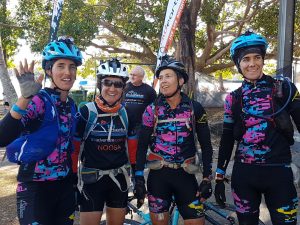 After picking up CP29 and being caught up by a few teams, we rolled the rest of the course with the Wild Women. Kim was leading the navigation for the ladies and as a local seemed to barely be looking at the map. Their pace was manageable and it made the racing more sociable, and was great to not have to hesitate at every track junction to confirm we were taking the right trail. This was particularly evident when we hit the single track mountain bike park at Tewantin where we would normally have to be much more attentive to the navigation in the maze of tracks. It was nice to be able to bomb the trails and just follow along on the map without second guessing every turn. One upside of such a long race is that we hit the abseil in day light. I’ve done plenty of ropes work in races before, but we always seem to hit these legs in the night time. It was great to do the 50m drop in daylight and be off the race clock – a big credit goes to the Wild & Co team for going to the trouble of including such a highlight in the race.
After picking up CP29 and being caught up by a few teams, we rolled the rest of the course with the Wild Women. Kim was leading the navigation for the ladies and as a local seemed to barely be looking at the map. Their pace was manageable and it made the racing more sociable, and was great to not have to hesitate at every track junction to confirm we were taking the right trail. This was particularly evident when we hit the single track mountain bike park at Tewantin where we would normally have to be much more attentive to the navigation in the maze of tracks. It was nice to be able to bomb the trails and just follow along on the map without second guessing every turn. One upside of such a long race is that we hit the abseil in day light. I’ve done plenty of ropes work in races before, but we always seem to hit these legs in the night time. It was great to do the 50m drop in daylight and be off the race clock – a big credit goes to the Wild & Co team for going to the trouble of including such a highlight in the race.
In all my pre-race predictions, I’ve been careful to mention the Wild Women team not just for their almost certainty to win the all-female category but for their ability to mix it at the front of the race. Hells Bells was a break through result for the women finishing second overall once penalties and time credits were taken into account. They did enter with the home ground advantage, but the team were looking physically the strongest I’ve seen them at a race right from start to finish.
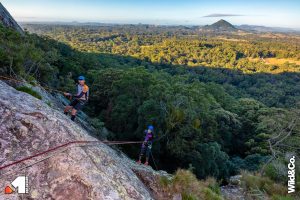 The Wild Women’s performance across the A1 series does raise the question of where all-female and all-male teams should sit in the grand scheme of Adventure 1. Adventure racing has always rightfully recognised the mixed category as the premier category. Traditionally the teams filling the podium of the big Australian AR races are mixed teams. Some big races overseas only allow the premier mixed category as an option. The reality is that while the sport exists in such a small niche, there will never be a large number of all-female teams. An argument could be made that the premier category could recognise not mixed teams, but any team containing a female in it (and indeed, some international races do so). The distinction on the face of it is a subtle one, but it would allow a team like the Wild Women to compete on the same standings as the mixed teams in the premier category and compete for the same prize pool, the total of which will always be limited given the level of sponsorship in the sport. However, I believe the message being given by such a ruling is that it devalues the strength of women in the sport – effectively you are saying that by at having at least one woman on the team, their contribution is mandated and therefore inherently less significant. I do have friends racing who bemoan the difficulty of finding women to race with and they see a team like the Wild Women as diminishing the pool of potential female team mates. At the same time, I get the desire for women to want to race in a team of all females as they may feel their contribution will be more significant or appreciated, or it is a safer space for them. Another argument would be to strike a middle ground and say every team must be a mixed team of two men and two women to qualify in the premier category, however in reality this is not practical and would lead to a significant decline in the number of premier mixed teams racing in Australia. Again, I don’t necessarily have answers to these questions, other than to say that I believe the Adventure 1 series has grown the strength of premier mixed teams of 4 in Australia, which I believe will see flow on effects for performances by Aussie teams on the international stage and this should be encouraged. One of the things I love most about the sport, both as a racer, a race director and a father of two young daughters is that is truly one of the few gender equitable sports on the planet where men and women compete on an equal footing and this should be encouraged as much as possible.
The Wild Women’s performance across the A1 series does raise the question of where all-female and all-male teams should sit in the grand scheme of Adventure 1. Adventure racing has always rightfully recognised the mixed category as the premier category. Traditionally the teams filling the podium of the big Australian AR races are mixed teams. Some big races overseas only allow the premier mixed category as an option. The reality is that while the sport exists in such a small niche, there will never be a large number of all-female teams. An argument could be made that the premier category could recognise not mixed teams, but any team containing a female in it (and indeed, some international races do so). The distinction on the face of it is a subtle one, but it would allow a team like the Wild Women to compete on the same standings as the mixed teams in the premier category and compete for the same prize pool, the total of which will always be limited given the level of sponsorship in the sport. However, I believe the message being given by such a ruling is that it devalues the strength of women in the sport – effectively you are saying that by at having at least one woman on the team, their contribution is mandated and therefore inherently less significant. I do have friends racing who bemoan the difficulty of finding women to race with and they see a team like the Wild Women as diminishing the pool of potential female team mates. At the same time, I get the desire for women to want to race in a team of all females as they may feel their contribution will be more significant or appreciated, or it is a safer space for them. Another argument would be to strike a middle ground and say every team must be a mixed team of two men and two women to qualify in the premier category, however in reality this is not practical and would lead to a significant decline in the number of premier mixed teams racing in Australia. Again, I don’t necessarily have answers to these questions, other than to say that I believe the Adventure 1 series has grown the strength of premier mixed teams of 4 in Australia, which I believe will see flow on effects for performances by Aussie teams on the international stage and this should be encouraged. One of the things I love most about the sport, both as a racer, a race director and a father of two young daughters is that is truly one of the few gender equitable sports on the planet where men and women compete on an equal footing and this should be encouraged as much as possible.
TL;DR
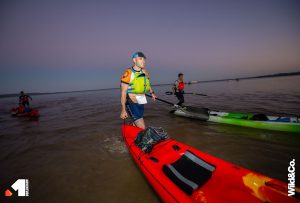 Anyway, that blew out to be a much longer rant than I expected. I don’t want the questions raised here to detract from what was overall a fantastic race and great course. Wild & Co nailed the event logistics from the back end: gear box logistics were simple and all the CPs were in the right location even if some of them required a bit of a grid hunt. The course visited some spectacular natural locations and was the long, tough hit out you would hope for from a 24hr race. I wouldn’t want to have been in Chris’s shoes after the race with some tough decisions to make in terms of penalties, but ultimately the best team on the day one. I’ll be back next year for sure looking to improve on our race performance.
Anyway, that blew out to be a much longer rant than I expected. I don’t want the questions raised here to detract from what was overall a fantastic race and great course. Wild & Co nailed the event logistics from the back end: gear box logistics were simple and all the CPs were in the right location even if some of them required a bit of a grid hunt. The course visited some spectacular natural locations and was the long, tough hit out you would hope for from a 24hr race. I wouldn’t want to have been in Chris’s shoes after the race with some tough decisions to make in terms of penalties, but ultimately the best team on the day one. I’ll be back next year for sure looking to improve on our race performance.
Again, Hells Bells served as another reminder of the importance of great team mates. Thanks to Chris, Michelle and Luke – you guys were a blast to race with and I look forward to the next one. It was encouraging to see that we were able to mix it up at the front despite some areas where we can clearly improve and grow. And the net result was that we are still on the virtual podium for the A1 series with plenty to race for in a heads up competition against Thunderbolt down at Wildside.
Race maps can be found here. For a more succinct summary of the race check out Chris’s video of the team:


Comments are closed.